Categoría "Química"
Se han encontrado 9 Coincidencias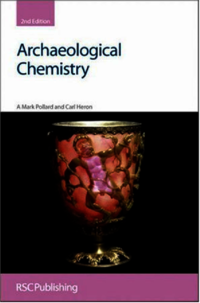
Archaeological Chemistry
Química aplicada a las ciencias arqueológicas.
102 Visitas | 158 Descargas | 2013-09-25 21:19:22 | eancedeg
Aplicación de las principales técnicas de análisis en química al análisis arqueológico de huesos, vidrios, porcelanas, aceros, aminoácidos, etc.
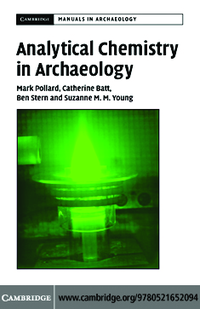
Analytical Chemistry in Archaeology
Química analítica aplicada al campo de la arqueología
89 Visitas | 113 Descargas | 2013-09-27 20:09:46 | eancedeg
Expone vías y variantes sobre la aplicación de novedosas técnicas analíticas en el campo de la arqueología.
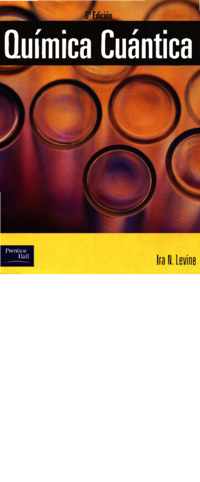
Química Cuántica
Química Cuántica
155 Visitas | 160 Descargas | 2013-10-18 18:19:32 | ahuici
Es un libro de texto utilizado como material complementario en el estudio de las carreras de Química.
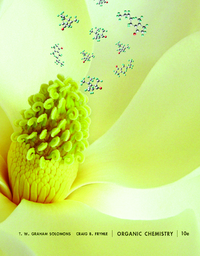
Organic Chemistry
Organic Chemistry
161 Visitas | 272 Descargas | 2014-01-08 14:37:52 | eancedeg
Este libro constituye una de las fuentes bibliográficas más importantes si del aprendizaje de la Química Orgánica se trata.
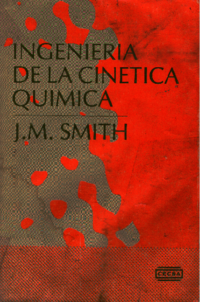
Ingeniería de la cinética química
82 Visitas | 119 Descargas | 2014-04-10 17:37:17 | raulito
En la década transcurrida desde la publicación de la segunda edición, los progresos logrados en el disefio de reactores han vuelto a hacer necesaria una revisión bastante completa de todos los capítulos. Esta revisión proporcionó una oportunidad para mejorar la presentación de los conceptos básicos. Los cambios más importantes de este tipo se encuentran en los Caps. 3-5. Las ecuaciones de conservación de la masa del Cap. 3 se han desar;ollado de una manera más general. Esta presentación permite que las expresiones de diseño para formas específicas de reactores, tal como aparecen en el resto del libro, se puedan obtener directamente por simplificación de las ecuaciones generales. El análisis de los reactores con recirculación, que no se incluyó en la segunda edición, se introduce en el Cap. 4. Los temas de reactores semicontinuos (Cap. 4) se han modificado de tal manera que, junto con los reactores con recirculación, proporcionen ilustraciones adicionales de las ecuaciones generales de conservación de la masa obtenidas en el Cap. 3. Para lograr una presentación m8s clara, los balances de masa y de energía se estudian como temas completamente separados. De esta manera, la ecuación general de conservación de la energía se desarrolla en el Cap. 5, donde se usa para el diseño de reactores no isotérmicas.
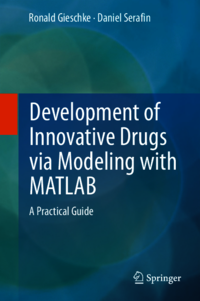
Development of Innovative Drugs via Modeling with MATLAB
83 Visitas | 104 Descargas | 2015-01-07 16:57:21 | raulito
bout 20 years ago, the pharmaceutical industry started to consider mathematical model-based drug development as a means to streamline the execution of drug development programs. This constituted a new discipline, pharmacometrics, grounded in pharmacology and statistics. We have written this book to describe our learning and experiences in the emergent field of pharmacometrics applied to drug discovery and clinical devel- opment. We did not aim to compete with the many excellent contributions in this field, both theoretical and practical, but rather wanted to highlight specific areas that we have repeatedly encountered. This book may also give answers to those who wonder to what kind of problems mathematics is actually applied in the modeling and simulation department of a large pharmaceutical company. Parts of this book require some familiarity with mathematical notation and elementary calculus including the concept of a differential equation. Besides providing some concepts behind drug discovery and development, we have added many exercises (with our solutions) designed to be solved symboli- cally or programmatically. As a programming language, we chose MATLAB (Version 2012b) as we found it best suited to the diversity of problems we faced. Our final message is that pharmacometrics could have an even larger impact on drug discovery and development if it were consistently applied to diseases and their potential treatment targets, thus merging with another quantitative discipline, systems biology, to form quantitative systems pharmacology. The book is organized into nine chapters. Background of Pharmacologic Modeling ( Chap. 1 ) introduces two topics which underpin later chapters: the emergence, role, and tasks of the pharmaceutical industry as a healthcare provider; and the philosophy of modeling and simulation. Regarding modeling, we start with a First Example of a Computational Model ( Chap. 2 ) from oncology to introduce physiologic, pharmacologic, and computational concepts that are explained and detailed in later chapters. Differential Equations in MATLAB (Chap. 3) provides the numerical and symbolic treatment of ordinary differential equations with time and state event scheduling. Pharmacologic Modeling (Chap. 4) is about dynamic concepts in relationship to drugs. This entails the modeling of drug concentrations and related body responses over time. Disease Modeling (Chap. 5) adds another component. As drugs work on a diseased human body, a model-based under- standing of how the body functions under the disease will be of value to learn how
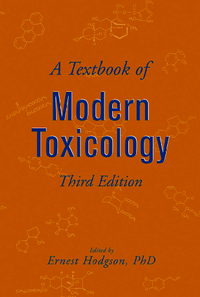
A Textbook of Modern Toxicology
Team DDU
91 Visitas | 99 Descargas | 2015-01-31 21:05:16 | raulito
There are some excellent general reference works in toxicology, includingCasarett and Doull’s Toxicology, 6th, edition, edited by Klaassen; a 13-volume Comprehensive Toxicology, edited by Sipes, Gandolfi, and McQueen; as well as many specialized monographs on particular topics. However, the scarcity of textbooks designed for teacher and student to use in the classroom setting that impelled us to produce the first and second editions of this work is still apparent. With the retirement of Dr. Levi, a mainstay of the first two editions, and the continuing expansion of the subject matter, it seemed appropriate to invite others to contribute their expertise to the third edition. All of the authors are, or have been, involved in teaching a course in general toxicology at North Carolina State University and thus have insights into the actual teaching process as well as the subject matter of their areas of specialization. At North Carolina State University, we continue to teach a course in general toxicology that is open to graduate students and undergraduate upperclassmen. In addition, in collaboration with Toxicology Communications, Inc., of Raleigh, North Carolina, we present an accelerated short course at the same level. Our experience leads us to believe that this text is suitable, in the junior or senior year, for undergraduate students with some background in chemistry, biochemistry, and animal physiology. For graduate students it is intended to lay the foundation for subsequent specialized courses in toxicology, such as those in biochemical and molecular toxicology, environmental toxicology, chemical carcinogenesis, and risk assessment. We share the view that an introductory text must present all of the necessary fundamental information to fulfill this purpose,but in as uncomplicated a manner as possible. To enhance readability, references have been omitted from the text, although further reading is recommended at the end of each chapter. Clearly, the amount of material, and the detail with which some of it is presented, is more than is needed for the average general toxicology course. This, however, will permit each instructor to select and emphasizethose areas that they feel need particular emphasis. The obvious biochemical bias of some chapters is not accidental, rather it is based on the philosophy that progress in toxicology continues to depend on further understanding of the fundamental basis of toxic action at the cellular and molecular levels. The depth of coverage of each topic represents that chapter author’s judgment of the amount of material appropriate to the beginning level as compared to that appropriate to a more advanced course. Thanks to all of the authors and to the students and faculty of the Department of Environmental and Molecular Toxicology at North Carolina State University and to Carolyn McNeill for much word processing. Particular thanks to Bob Esposito of John Wiley and Sons, not least for his patience with missed deadlines and subsequent excuses.
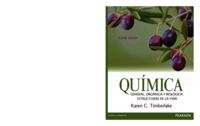
QUÍMICA General, Orgánica y Biológica. Estructuras de la vida
Química General, Orgánica y Biológica.
176 Visitas | 201 Descargas | 2015-12-03 19:57:32 | ahuici
Es un libro que trata aspectos de la Química General, Orgánica y Biológica, de gran utilidad para estudiantes de carreras de medicina, ciencias ambientales y agropecuarias.
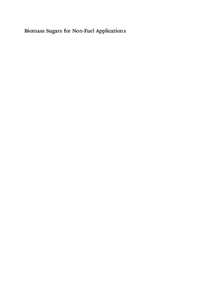
Biomass Sugars for Non-Fuel Applications
60 Visitas | 55 Descargas | 2017-02-14 07:10:05 | raulito
The search for a sustainable source of chemicals as alternatives to petroleum has led to the discovery of multiple routes for renewable biomass conversion into biofuels and value-added platform chemicals. Extensive research in this area has been focused primarily on the diversification of energy resources. In fact, the amount of biomass available currently is too limited to address all the demands with respect to fuels. Thus ca. 30% of the global arable land is needed to cover only 10% of the global fuel demand by 2030. It should be noted that currently the majority of oil is used for the production of fuels, while only 5–8% (5.8 in 2012) of a crude oil barrel is used in the manufacture of chemicals, while the turnover in monetary value is almost the same for fuels and chemicals. Since the price of fuels is much lower than for chemicals, in the future, limited resources should be used mainly for chemicals, while the growing energy demand must be compensated for by alternative energy sources (solar, hydropower, nuclear, etc.). The major components of lignocellulosic biomass are cellulose (40–50%), lignin (16–33%) and hemicelluloses (15–30%), where the last two are practically built up of sugar units. Therefore, biomass is a rich feedstock for the various sugars and their derivatives. Sugar derivatives were considered as the top twelve value-added chemicals from biomass by the U.S. Department of Energy (2004). Extensive research was performed to advance the technology of cellulosic biomass transformation into biofuels. However, sugar-based chemicals are also a green and feasible source for the sustainable manufacturing of a variety of valuable products including polymers, surfactants, pharmaceuticals, and others.
Contribuir
Usted puede contribuir con Libros UCLV, es importante para nosotros su aporte..
Contribuir